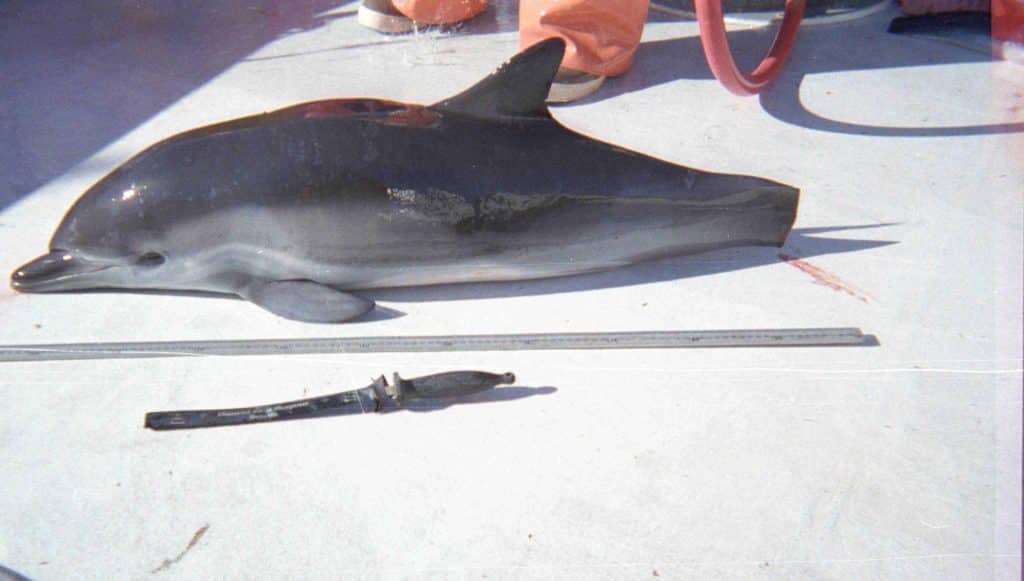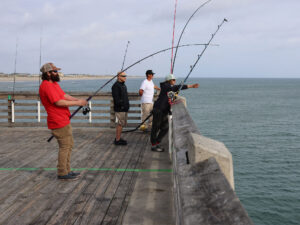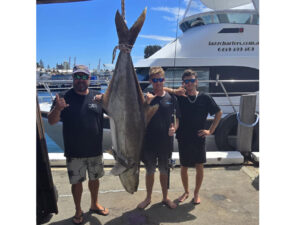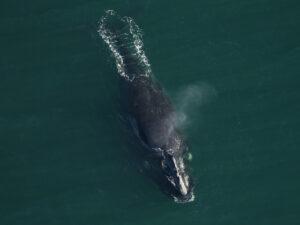
Dolphin Mutilated and Killed by a Drift Gill Net
Three state legislators in California have submitted an assembly bill this week that would ban the use of drift gill nets along the state’s entire coast.
Assemblymember Paul Fong (D-San Jose) introduced AB 2019, which was joint-authored by Assemblymember Marc Levine (D-San Rafael), principle co-authored by Mark Stone (D-Monterey Bay), and co-authored by Anthony Rendon (D- Lakewood) to end the indiscriminate capture and killing of marine wildlife such as whales, dolphins, sea lions, sea turtles, and sharks, in mile-long drift gill nets off California’s coast.
The bill sponsors, Oceana and Turtle Island Restoration Network, issued a news release stating that the two organizations are “committed to ridding the Pacific Ocean of this deadly method of fishing that results in more marine wildlife being discarded than fish retained.”
“California has been a national leader in environmental and conservation efforts,” said Assemblymember Fong. “The fact that California still permits the use of these deadly drift gillnets while other states on the western coast have banned the use is shameful. AB 2019 will help save the nearly 70 percent of the unintended marine wildlife that are caught and then discarded.”
Drift gill nets used largely to target swordfish and thresher sharks off the California coast. However, they are indiscriminate killers that entangle more than 100 marine mammals every year as well as thousands of sharks and many other ecologically and economically important fish. Once entangled in these nets, the animals become critically injured, and most eventually die. Drift gill nets for swordfish have already been prohibited in Washington and Oregon, and have been banned on the Mediterranean Sea and across the international high seas.
Oceana says it was able to obtained via a Freedom of Information Act (FOIA) request filed with the National Marine Fisheries Service (NMFS) photos of marine animals killed in the California drift nets. “These disturbing images of maimed and dead ocean wildlife—including endangered species—clearly illustrate the need for California to join the rest of the West Coast and many other regions across the globe in replacing drift gill nets with cleaner fishing gear,” Oceana stated.
According to NOAA observer data, from May 2007 to January 2012, the drift gill net fishery discarded 67 percent of all marine animals it caught. In 2011, for every five swordfish landed one marine mammal was killed, and six fish—including sharks and tunas—were tossed overboard, clearly dead or dying. On average only 15.6 percent of the fishery has been observed over these five years, levels insufficient to manage the fishery effectively, and insufficient for accurately accounting for the take of rare species. In 2013, NMFS instituted emergency regulations in response to the fishery seriously injuring and killing an estimated 16 endangered sperm whales in 2010, but these rules expired January 31, 2014. The bill introduced this week would finally resolve all of the many bycatch problems associated with this gear type, from endangered whales and sea turtles to the thousands of sharks and other fish species needlessly caught and killed.
“The use of drift gill nets off California is a failed 30-year experiment that must come to an end,” said Dr. Geoff Shester, California Program Director for Oceana. “It‘s time for California to remove these destructive nets that result in the senseless and cruel taking and killing of over 100 marine mammals every year and shift California’s efforts toward sustainable solutions.”
“The drift net fishery for swordfish is California’s deadliest catch,” said Teri Shore, Program Director at Turtle Island Restoration Network. “The drift net fishery kills more marine mammals than any other along the West Coast. It’s time to end use of drift net gear.”








